- 19, 2024. Credit: AP Photo/Amr Nabil">

The super moon rises behind the Dome of the Rock shrine at the Al Aqsa Mosque compound in the Old City of Jerusalem, Monday, Aug. 19, 2024. Credit: AP Photo/Leo Correa 
A cable car heads toward Sugarloaf Mountain as the supermoon rises into the night sky in Rio de Janeiro, Monday, Aug 19, 2024. Credit: AP Photo/Bruna Prado 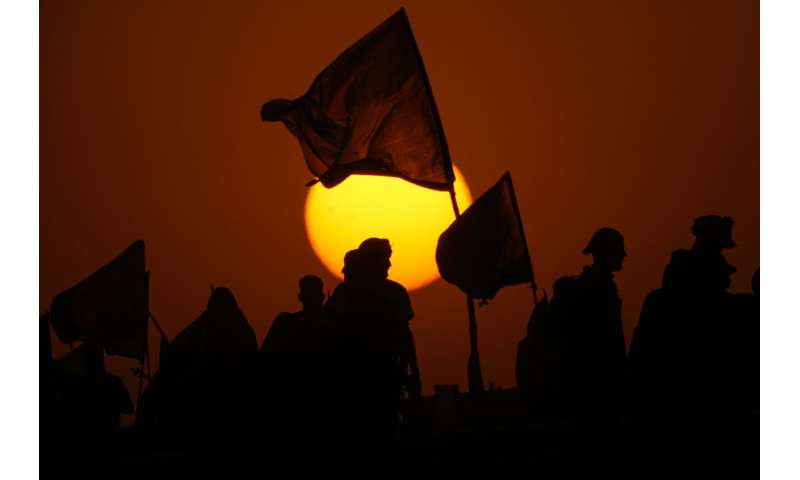
The sun sets as Shiite pilgrims march on their way to Karbala for Arbaeen in Babil, Iraq, Monday, Aug. 19, 2024. Credit: AP Photo/Hadi Mizban 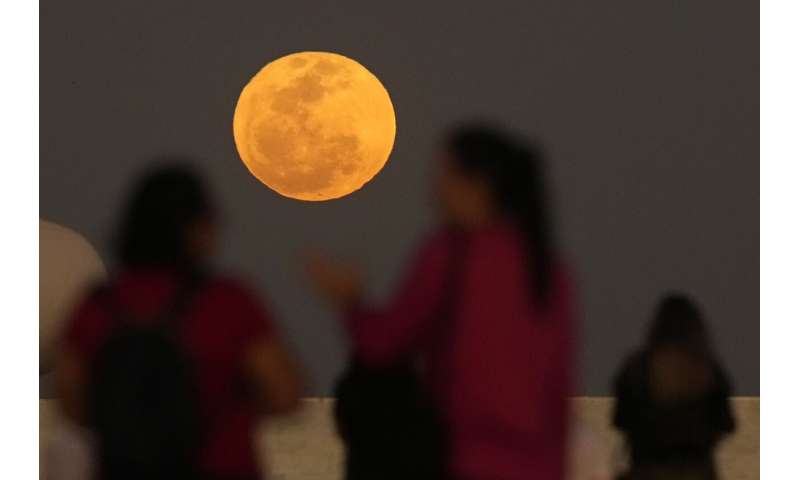
Residents watch the supermoon rise over the "Memorial JK," a monument in honor of the founder of Brasilia, Brazil, Monday, Aug. 19, 2024. Credit: AP Photo/Eraldo Peres 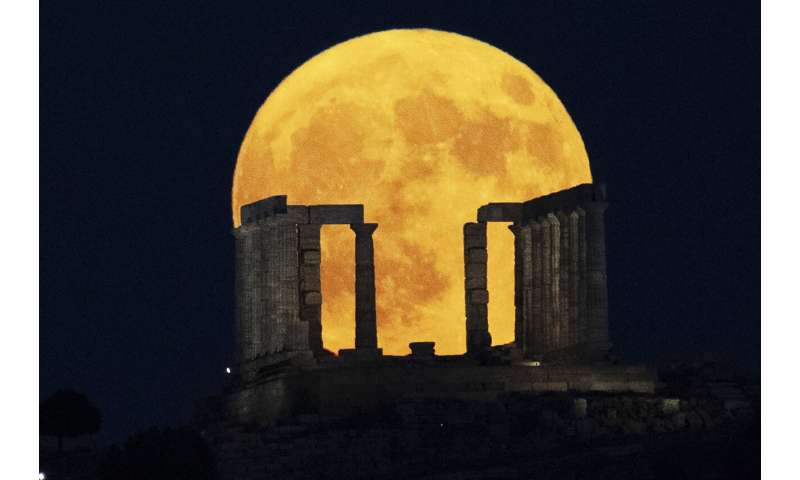
The super moon rises behind the Temple of Poseidon at Cape Sounio, south of Athens, Monday, Aug. 19, 2024. Credit: AP Photo/Michael Varaklas 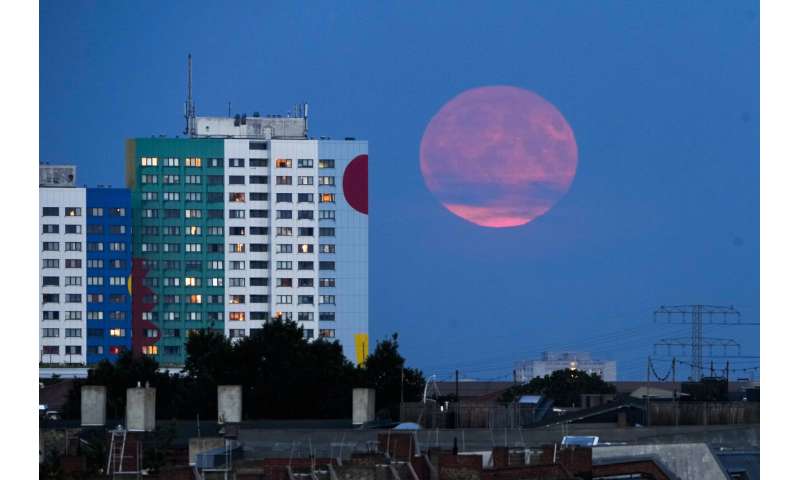
The supermoon rises from behind a resident building in Berlin, Monday, Aug. 19, 2024. Credit: AP Photo/Markus Schreiber 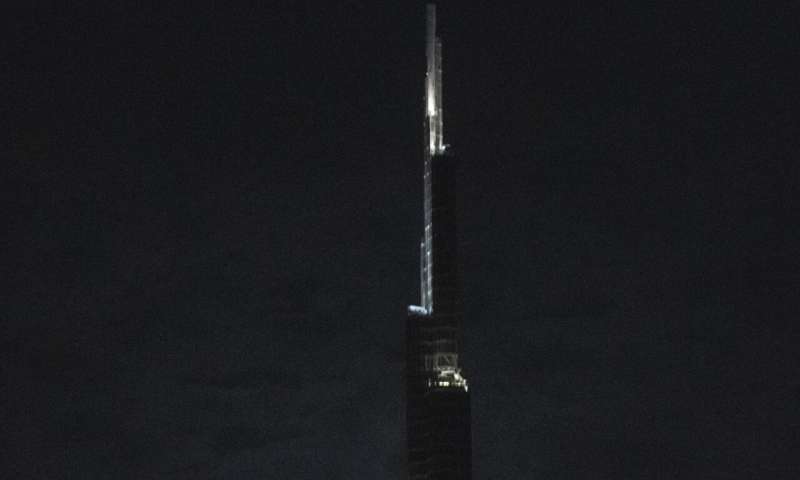
A supermoon rises behind the Burj Khalifa, world's tallest tower in Dubai, United Arab Emirates, Monday, Aug. 19, 2024. Credit: AP Photo/Altaf Qadri 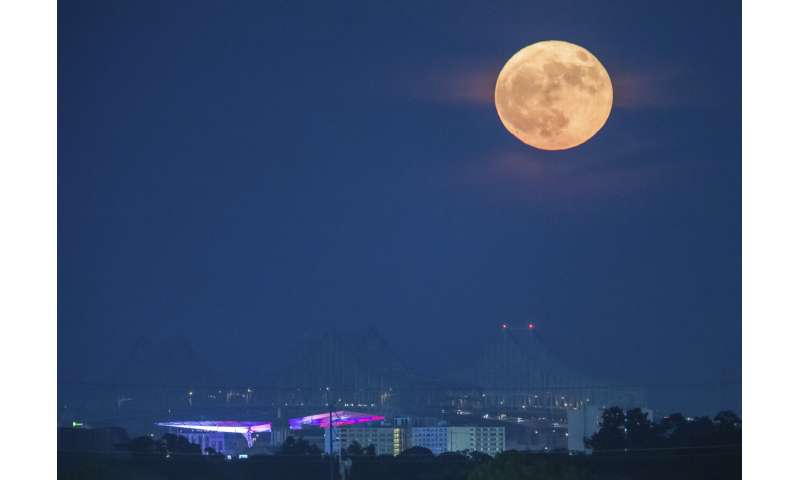
A blue supermoon rises over the Crescent City Connection bridge in New Orleans, Monday, Aug. 19, 2024. Credit: David Grunfeld/The Times-Picayune/The New Orleans Advocate via AP 
A nearly full supermoon rises in the sky after rain in Beijing, Monday, Aug. 19, 2024. Credit: AP Photo/Andy Wong 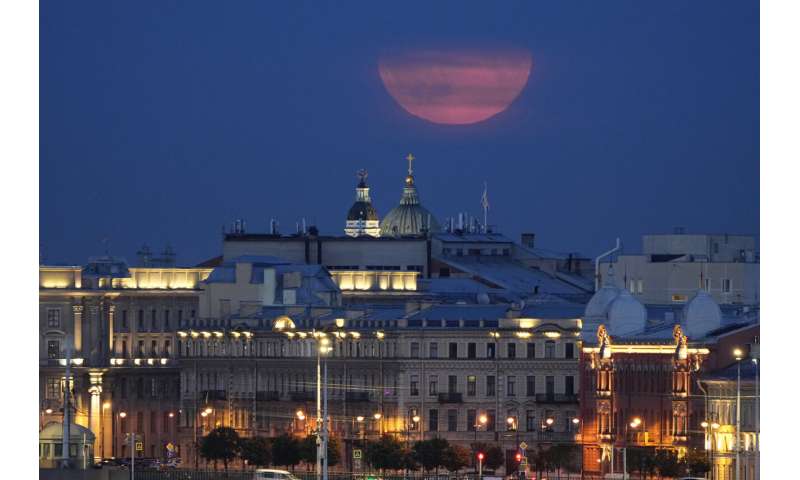
The super moon rises in the clouds over St. Petersburg, Russia, Monday, Aug. 19, 2024. Credit: AP Photo/Dmitri Lovetsky
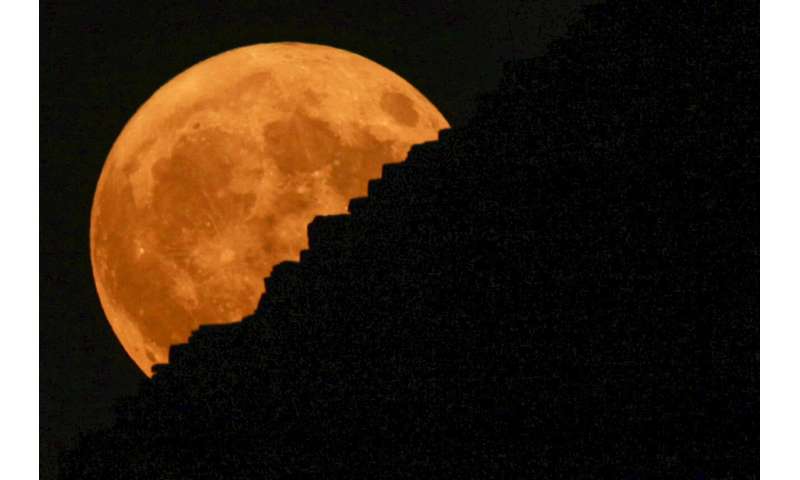
© 2024 The Associated Press. All rights reserved. This material may not be published, broadcast, rewritten or redistributed without permission.



